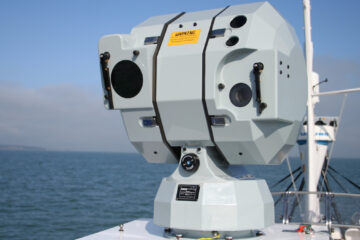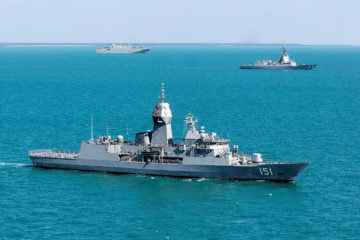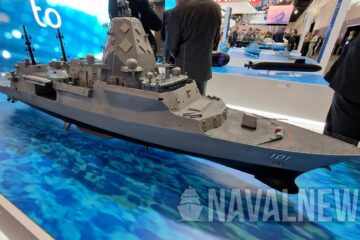The plan’s objectives aim at ensuring a perfect cooperation between uniformed personnel and industry, helping each other in order to achieve a high level of sustainability for the newer and future classes of ships of the RAN. Plan Galileo sees sustainment as a whole-of-life concept, considering sustainment needs at the design stage of a vessel. It considers Capability Life Cycle Management from the outset as an underlying principle of continuous sustainment, underpinned by the need to support a seamless transition from acquisition to sustainment.
According to the Australian Ministry of defense the Galileo plan focuses on 6 themes: Regional Maintenance Centers; Infrastructure; Skilled workforce; Supply chains; New technologies and Industry participation.
Plan Galileo aims to achieve the following three key objectives by 2025:
- Build a new approach to integrated Capability Life Cycle management.
- Leverage new technologies and learning to improve productivity and promote increased levels of innovation, collaboration and knowledge-sharing in the maritime domain.
- Generate the skilled workforce needed to meet this challenge.
“The aim of Plan Galileo is that in 2025, Defence will operate in a nationally integrated sustainment environment that consistently provides affordable, reliable and fit for purpose systems and ships to Navy. The project is also focused on effective utilization, growth and support of Navy’s technical and logistics mastery, including ongoing involvement of Fleet Support Units throughout Australia in the delivery of maintenance and our Maritime Logistics personnel in the provision of integrated logistics support and 21st century supply chain development and management.”
Rear Admiral Malcolm
Regional Maintenance Centers
Plan Galileo focuses sustainment on Regional Maintenance Centres (RMCs), which are strategically located sustainment centers bringing together the Fleet Support Unit, primes and local small businesses and suppliers. The RMCs will have the capability to sustain multiple classes of Royal Australian Navy surface fleet units using in-place infrastructure and personnel, maximizing the efficiency and effectiveness of Australia’s naval sustainment workforce.
Infrastructure
Current infrastructure will require updates and refurbishment to support modern classes of ships. Likewise, ship lift and dry dock capacity and contingency must be reviewed, both nationally and regionally, to address the growing fleet size. The opportunity under Plan Galileo is to develop a long-term approach to infrastructure delivery and building local capability.
Skilled Workforce
The workforce of the future must be suitably equipped with the requisite skills and expertise to deliver future sustainment requirements. As such, the Australian MoD must optimize workforce development and leadership programs to increase technical, leadership and supervisory proficiency, facilitate career progression and enable the personal and professional growth of our workforce.

Supply Chains
A successful sustainment infrastructure relies on a robust and highly efficient inventory and supply chain. As the fleet grows in size, complexity and age over the longer term, the supply chain (including the vendor base) must deliver the support necessary to achieve the required level of readiness and provide seaworthy capabilities whilst forecasting future logistics requirements. Australia must also leverage opportunities for international cooperation by establishing a strong global supply chain for Continuous Naval Shipbuilding and future sustainment.
New Technologies
The productivity gains from technologies such as collaboration platforms, digital twin modelling, augmented reality, master data management, artificial intelligence and machine learning provide significant opportunities to improve the way sustainment is carried out. Data and technology need to be transformed based on a single source of truth with a nationally based IT enterprise in mind.
Industry participation
Industry plays a crucial role in delivering seaworthy capability and its involvement is at the heart of Continuous Naval Shipbuilding and sustainment. A productive Australian industrial base able to deliver affordable and achievable naval capability is a strategic national asset and one that we need to help foster.






